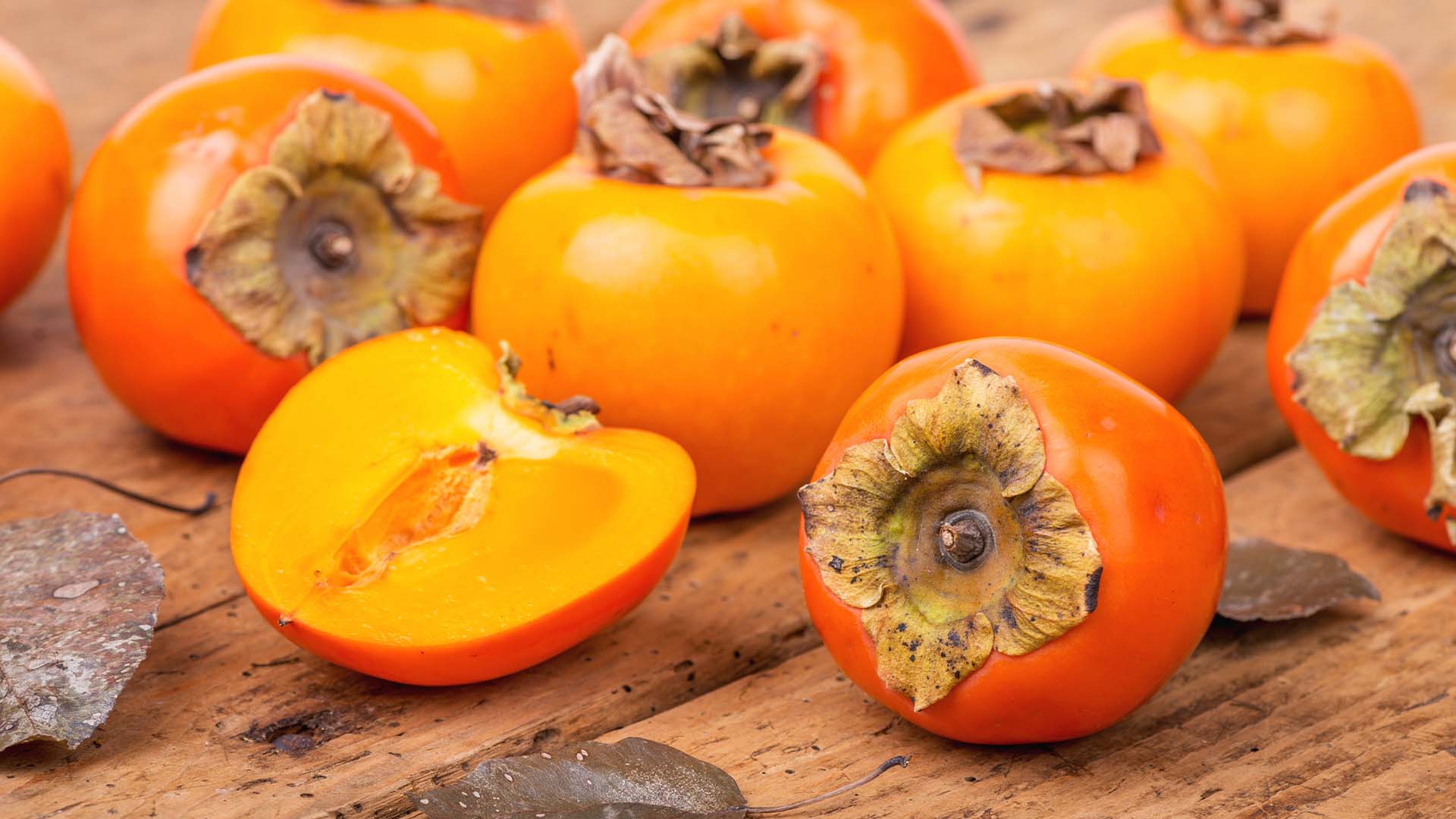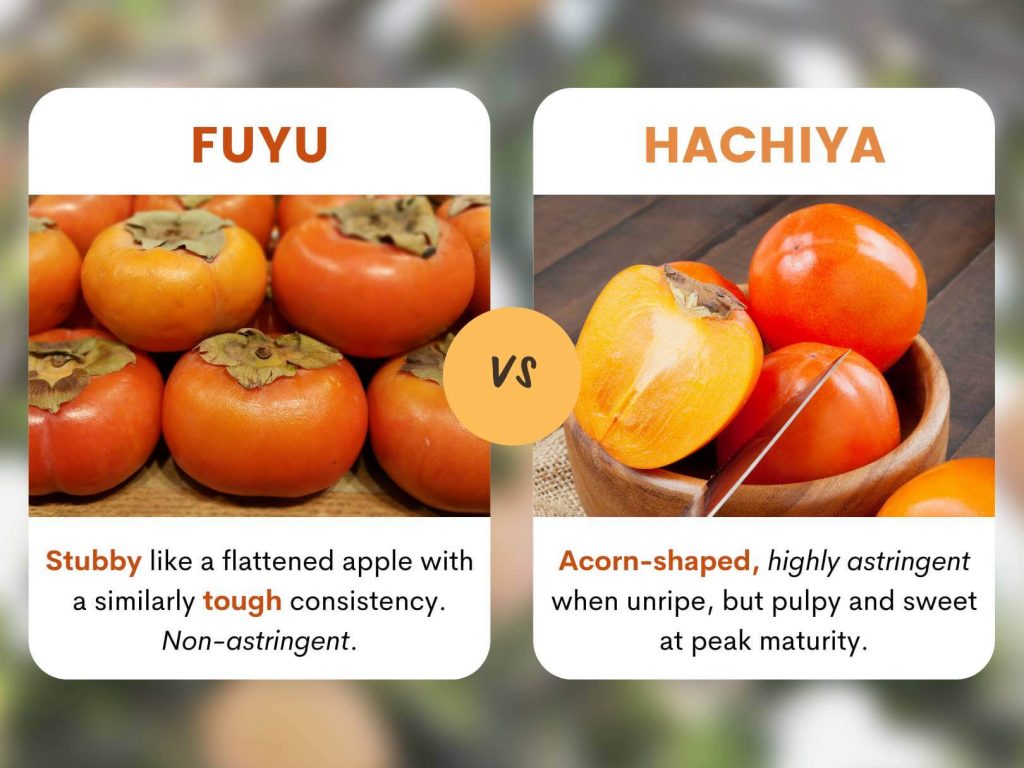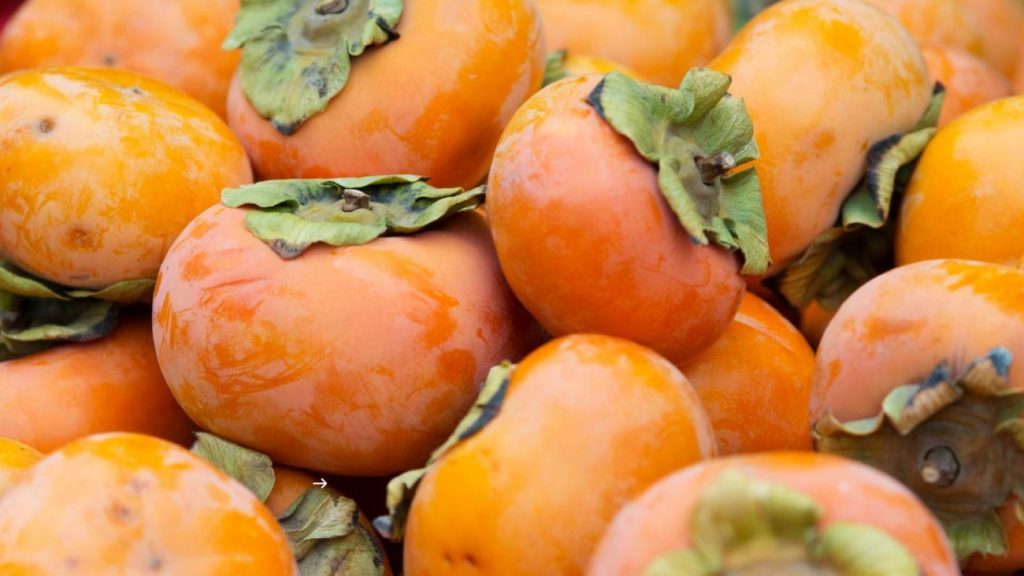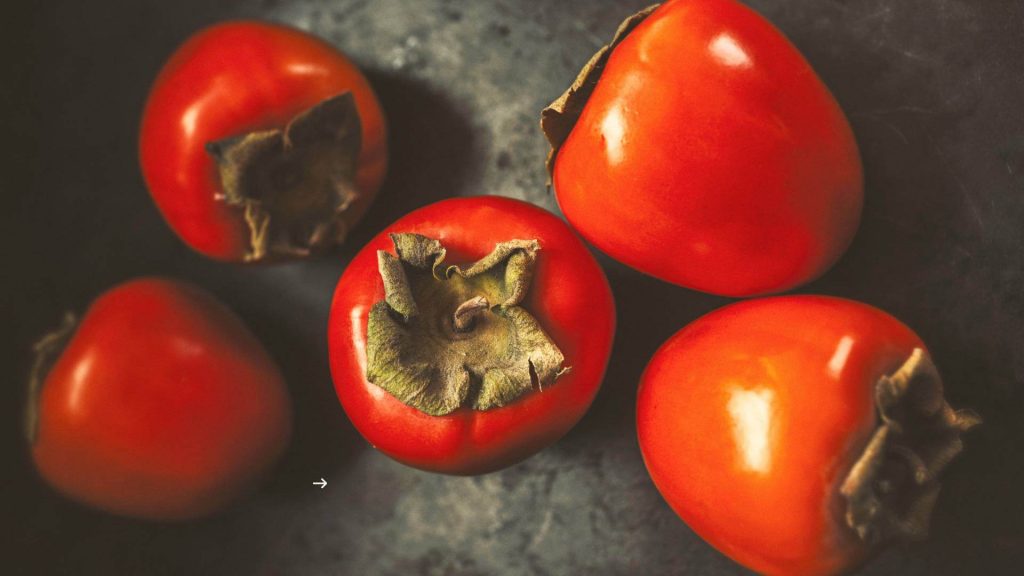A Chef’s Guide to Cooking with Persimmons
Welcome to a helpful introduction to the cherished persimmon fruit and its most widespread varieties, Fuyu and Hachiya. We’ll visit everything essential on their seasonality, prep, recommended uses, and much more!
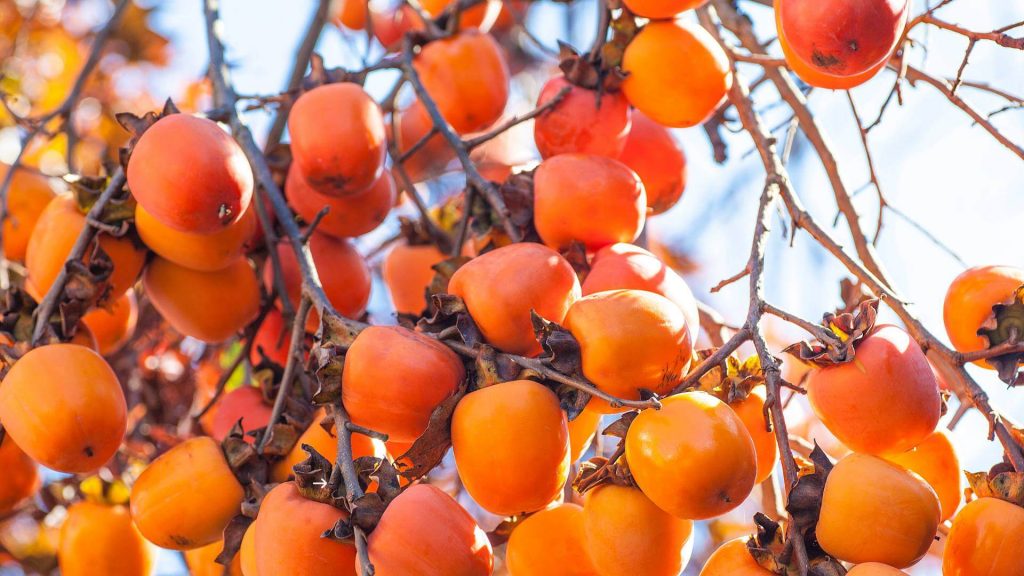
For a fruit that was thought to scare tigers away in Korean folklore, dried persimmons make for a delicious fall dessert. This is not to say that this exotic delicacy is anything less than legendary. After all, the first records of persimmon cultivation date back to Ancient China more than 2000 years ago!
Nowadays, persimmons flood local markets each fall. Even so, not everyone can tell apart their main varieties and what they’re best suited for. We’ll talk about this mysterious berry covering seasonality, health benefits, uses, and the most widespread types you’ll find in the U.S., namely Fuyu and Hachiya!
What Are Persimmons?
When we called them mysterious berries, it wasn’t a metaphor. Morphologically, persimmons are berries (alas, this is not widely known, as with tomatoes). They grow in great numbers on the apple-like branches of the Diospyros kaki, also known as the Oriental persimmon tree, which can reach up to 20-30 ft. tall.
When fully ripe, the fruit ranges from glossy, light orange to dark red-orange depending on the exact variety. The flesh, too, varies from light yellow-orange to dark brown, and different types boast distinctive nuances in flavor and texture.
Generally speaking, ripe persimmons have a smooth, slippery texture. They’re high in glucose and carry a rich, honey-like sweetness unique to the fruit itself, tasting a bit like peach mixed with mango.
When are Persimmons in Season?
The fruit matures in late fall. Because persimmons can stay on the tree until winter, they are in season from October through January and even February. Each season, you’ll find local as well as imported varieties on the market.
China, Korea, and Japan remain the world’s main cultivators, but these easy-to-grow winter fruits have also taken root in the U.S. To be precise, we grow two main species according to AgMRC: Diospyros kaki (the predominant oriental variety) and Diospyros virginiana (native to Eastern North America). California is home to the vast majority of domestically-grown Oriental varieties.
Types of Persimmons
Some of the leading U.S. cultivars of Oriental persimmons are Fuyu, Fuyugaki, Hachiya, Chocolate, Eureka, Jiro, and Tanenashi. Some are edible when firm and crisp, like the Fuyu persimmon. Others like Hachiya need time to soften after harvest and are best eaten when they feel almost over-ripe.
A crucial distinction to be made relates to their astringency. Hence persimmons can be divided into two types: astringent and non-astringent (or puckering or non-puckering). Astringency describes the drying-out, rough, and puckery sensation felt in the mouth after consuming certain foods. Examples include soy-based products, red wine, green tea, and some fruits, especially unripe (pomegranates, green bananas, apples, and so forth).
For instance, the stubby Fuyu, the most common variety in the U.S., classifies as non-astringent. In contrast, the acorn-shaped Hachiya is the most common astringent persimmon. Here’s a more comprehensive list:
Astringent
- Hachiya
- Hongsi
- Gionbo
- Chocolate
- Saijo
- Nikita’s Gift
- Tanenashi
Non-astringent
- Fuyu
- Giant Fuyu
- Izu
- Jiro
- Soshu
- Taishu
- Dan-gam
Since the Fuyu and Hachiya varieties are the most widespread types found on the U.S. market, we’ll discuss their qualities and use in the following sections.
Fuyu vs. Hachiya
Fuyu Persimmon
Fuyu persimmons account for approximately 80% of the persimmon market. A Fuyu is squat and stubby in shape, kind of like a flattened apple. It’s also hard like one, boasting a spicy-sweet flavor with unique tropical and cinnamon hints. This variety is excellent eaten raw on its own, but you can also bake or roast Fuyu persimmons for a sweet and savory side dish.
Now, the so-called non-astringent persimmons are not free of tannins (the substance to blame for astringency). They just contain tannins in far smaller amounts. Therefore, because Fuyu is less astringent, you can enjoy them right after harvest when it’s still firm, but also soft, after the fruit has fully ripened.
Hachiya Persimmon
Hachiya persimmons are acorn-shaped and taste best when they feel like overripe tomatoes. Unlike the tough Fuyu, they’re jelly-like, creamy, and boast a tangy-sweet flavor once they reach peak maturity. However, because Hachiya is very high in tannin, the fruit is astringent and bitter when unripe — you don’t want to sink your teeth into it!
However, tannin levels drop as the fruit reaches maturity, turning rich, pulpy, and sweet. Hachiya is fantastic for use in baked goods such as muffins, cookies, bread, and puddings.
How to Use Fuyu & Hachiya
Fuyu persimmons serve a multi-purpose use. They’re best eaten raw or sliced and added to salads, cereal, smoothies, but they are also suitable for baking and roasting.
Hachiya persimmons, on the other hand, boast a creamy, jelly-like consistency best for baked goods such as muffins, cookies, bread, and puddings.
What is the Sweetest Persimmon Variety?
One of the sweetest persimmon varieties is Fuyu, which can be consumed when firm. On the other hand, Hachiya persimmons only get their characteristic sweetness at peak maturity, when the fruit feels like an overripe tomato. So don’t be afraid if it feels a bit too soft!
Another sweet persimmon variety is the less-common Hyakume, also known as the Cinnamon persimmon. The non-astringent fruit is short, stout, and looks quite a lot like an orange tomato!
How to Store Persimmons
Ripe persimmons are best eaten or prepared right away, but you can also refrigerate them for one or two more days.
On the other hand, unripe persimmons last in the refrigerator for up to one month if stored unwashed with proper airflow control, preferably in the crisper drawers of the fridge.
Make sure to also check out our best practices blog on how to preserve all types of produce for peak freshness and quality!
Where Can You Buy Persimmons in Bulk?
Persimmons are in peak season! We deliver both Fuyu and Hachiya varieties at the highest quality and freshness directly to your hospitality establishment.
Place your orders on our website, and feel free to contact us at in*******@ri************.com for any inquiries on our products.
